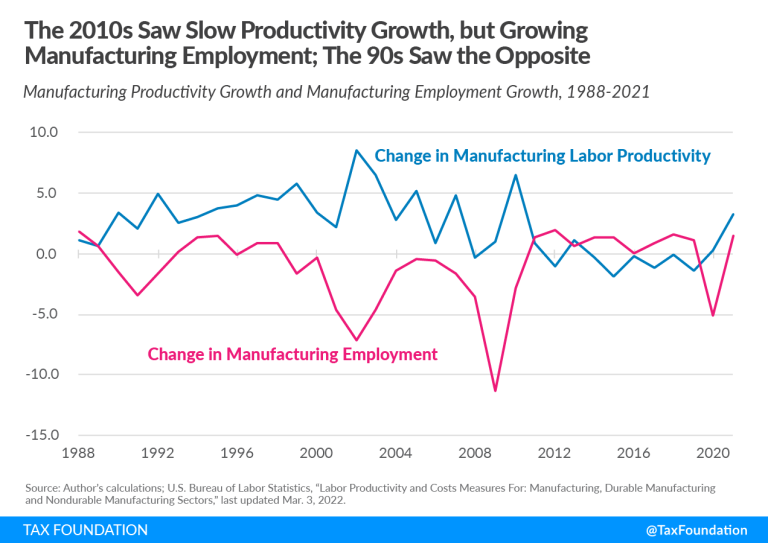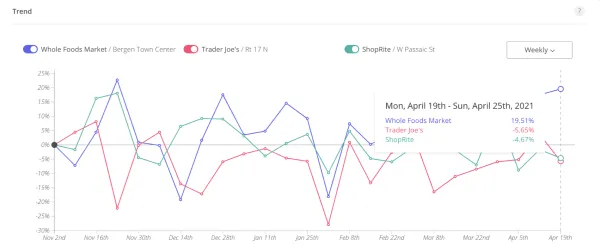Tech Mahindra Drives the Next Wave of Industrial Innovation with Private 5G

Empowering Industrial Manufacturing with Private 5G Networks
In today’s fast-paced digital world, the emergence of private 5G networks is reshaping how businesses modernize operations. Recent developments led by companies like Tech Mahindra in India are sparking debates about the future of Industry 4.0. This op-ed examines the evolution of private 5G, explores the opportunities it brings to sectors such as automotive manufacturing and connected robotics, and offers a critical opinion on the challenges and opportunities ahead. As industries look to combine ultra-fast connectivity with AI, IoT, and edge computing, the digital transformation appears not only possible but within reach—if companies can figure a path through the tricky parts and tangled issues involved.
Working through regulatory hurdles, technology integration demands attention to fine points that could determine whether innovation flourishes or fizzles out. Today, we dive into the real-world application of private 5G in India and discuss the business, technical, and regulatory factors that are reshaping the landscape.
Private 5G Networks: A Leap Toward Industry 4.0
The advent of private 5G networks is bringing ultra-fast, low-latency connectivity to enterprise environments. As demonstrated by Tech Mahindra’s recent rollouts in the automotive manufacturing sector, these networks have enabled connected robotics and real-time analytics. Unlike traditional networks, private 5G offers dedicated and secure connectivity, making it ideal for fast-paced production environments where split-second decisions and automated processes are becoming increasingly common.
Our opinion is that private 5G is not just a technological upgrade but rather a transformative shift into an era marked by digital collaboration between machines and humans. The implementation of these networks creates a foundation for advanced Industry 4.0 use cases. However, companies must learn to steer through the confusing bits and hidden complexities such as spectrum limitations, regulatory restrictions, and device compatibility issues if they are to seize the benefits fully.
Industry 4.0 Advancements with Artificial Intelligence Integration
One of the most promising aspects of private 5G is its potential to work seamlessly with artificial intelligence. By combining high-speed networks with AI-led analytics, companies can achieve significant improvements in productivity and quality. For instance, AI can monitor equipment health in real time, predict maintenance requirements, and optimize production processes. These AI-led use cases are essential, particularly in heavy industry sectors where every minute counts and downtime is expensive.
Tech Mahindra’s collaboration with Indian telcos to develop AI-powered private 5G solutions is a telling example of how industry players are taking on new challenges head-on. Rather than getting bogged down by intimidating regulatory frameworks, these collaborations are exploring innovative approaches to business digitalization. The integration of AI into private 5G networks creates a win-win scenario: businesses can tap into improved operational efficiency, while telcos explore new revenue streams.
- Real-time analytics for predictive maintenance
- Enhanced safety protocols through intelligent automation
- Optimized supply chain management using on-the-spot data
- Improved operational efficiency in manufacturing processes
Industrial Manufacturing Transformation with 5G Integration
Industrial manufacturing is at the forefront of leveraging private 5G. By incorporating connected devices throughout production lines, manufacturers are able to monitor performance parameters and adjust systems in real time. This transformation means that the production floor is evolving into a smart environment where human workers and robotic systems operate in harmony.
Remarkably, Tech Mahindra’s efforts in deploying captive non-public networks (CNPNs) in automotive manufacturing have already showcased tangible benefits. Car manufacturers are witnessing enhanced productivity and quality control by using 5G-enabled robotics and automated analytics. The ability to collect and process high volumes of data from sensors and machinery in real time is turning traditional assembly lines into flashpoints of digital innovation. This progress not only minimizes downtime but also paves the way for cost savings and safer working conditions.
| Key Benefit | Impact on Manufacturing |
|---|---|
| Real-time data processing | Faster decision-making and improved quality control |
| Enhanced machine connectivity | Smoother operations and predictive maintenance |
| Secure private networks | Greater operational security and reduced downtime |
| Integration with AI and IoT | Optimized production and automated quality checks |
Addressing Spectrum Challenges and Regulatory Issues in India
Although the technological advantages of private 5G are evident, India’s regulatory environment presents some nerve-racking challenges. Spectrum allocation and licensing issues continue to slow down broader adoption. The Department of Telecommunications has initiated demand studies to understand private 5G spectrum requirements, yet business responses have been tepid. This hesitation is partly due to unclear return on investment and the tangled issues inherent in the existing regulatory framework.
Industry voices have pointed out that regulatory uncertainty is one of the most intimidating barriers to entry. The Cellular Operators Association of India (COAI) has already voiced reservations about copying licensing practices from other countries, arguing instead for a model that is customized to India’s unique business landscape. This operator-led approach is seen as a potential remedy to some of the regulatory challenges, as it may offer cost-effectiveness, improved security, and better adaptability for Indian enterprises.
- Spectrum limitation and allocation hurdles
- Licensing practices that may not fit India’s unique market
- Unclear cost-benefit scenarios leading to slow adoption
- Tangled regulatory issues causing confusion among enterprise decision-makers
Industry experts suggest that a more flexible regulatory regime could unlock the potential for digital transformation across sectors like logistics, healthcare, and manufacturing. As more companies begin to appreciate the RoI of digital transformation, the hope is that the government will figure a path through these confusing regulatory bits and offer guidelines that foster innovation rather than stifle it.
Collaborations and Ecosystem Partnerships for AI-Enhanced Private 5G
Partnerships between IT services firms, telcos, and industry players are proving key to overcoming the tangled issues associated with private 5G deployments. Tech Mahindra’s efforts, including its collaboration with Bharti Airtel to build India’s first 5G-enabled automobile manufacturing plant at Mahindra’s Chakan facility back in 2022, exemplify new trends in cross-industry partnership. These collaborative efforts are driving the co-development of tailored solutions for Industry 4.0, where AI, IoT, and edge computing converge.
The emerging trend is evident in the way companies are combining expertise from different sectors. This teamwork is intended to create comprehensive solutions that address specific industry challenges and offer innovative digital transformation pathways. By working through these complicated pieces together, industry players can leverage collective intelligence to solve the small distinctions that separate an average deployment from a game-changing industrial upgrade.
- Joint solution development for Industry 4.0 challenges
- Co-investment in AI-enhanced network setups
- Shared expertise to address confused regulatory frameworks
- Collaborative testing and validation of new technologies
It’s also critical to note that these collaborative paths are not without their own hidden complexities. Each partner brings their unique perspective and operational priorities, which means that aligning strategies takes considerable effort. Yet, if stakeholders can figure a path through these tricky parts and minor twists, the rewards could be profound—accelerating not only the pace of digital transformation in India but also setting a benchmark for global practices.
Future-Proofing Enterprise Connectivity: The Role of Telcos
Private 5G networks present a dual opportunity for both enterprises and telcos. While businesses can enjoy dedicated connectivity and secure networks, telcos gain a new revenue stream by providing tailored network services to enterprises. The mutual benefits have led to increased collaborations, as telcos are keen to innovate alongside IT services firms in building sustainable and secure networks for industry-specific applications.
However, the path is full of moments where one must get around tangled issues related to spectrum availability and device interoperability. Telcos, traditionally accustomed to large-scale public network deployments, now find themselves challenged to adapt to a more segmented market where tailored, enterprise-specific solutions are the norm. The shift toward an operator-led model, as recommended by industry bodies like GSMA, could offer a systematic way forward by pooling resources and expertise to design cost-effective, secure, and high-performing network solutions.
In our view, the key for telcos is to focus on creating flexible, scalable solutions that can adapt to the evolving needs of various industries. By ensuring that private networks are well integrated with advancements in AI, IoT, and edge computing, telcos can play a pivotal role in the broader journey toward digital transformation. This approach not only solidifies their position in the market but also helps drive the next wave of technological innovation in enterprise connectivity.
Real-World Examples and Use Cases Transforming Business Operations
The practical implications of private 5G networks surface vividly in the automotive manufacturing sector. At facilities like those at Mahindra’s Chakan plant, private 5G has enabled high-speed connectivity that supports sophisticated robotics, streamlined production lines, and real-time quality assurance. Here are several compelling use cases:
- Smart Robotics: Robots can now collaborate seamlessly with human workers thanks to near-instantaneous network responses. This integration helps in automating repetitive tasks while ensuring high precision and enhanced safety protocols.
- Predictive Maintenance: By using advanced sensors and AI algorithms, manufacturers can monitor equipment performance and predict malfunctions before they lead to costly downtime.
- Real-Time Analytics: Instant data collection and processing allow enterprises to adjust production parameters on the fly, leading to improved product quality and operational efficiency.
- Supply Chain Optimization: Enhanced connectivity facilitates detailed tracking of parts and inventory, allowing companies to respond swiftly to fluctuations in demand or supply disruptions.
These examples underscore how private 5G can serve as a super important enabler for next-generation manufacturing processes. The technology not only supports innovative applications but also helps create an ecosystem where every link in the production chain benefits from digital transformation.
Dealing with the Confusing Bits of 5G Device Compatibility
While private 5G undeniably offers a range of benefits, there remain several confusing bits when it comes to device compatibility. Ensuring that the wide array of connected devices—from robotics to sensors—can communicate over a single, unified network is a task full of problems. The intricate dance between legacy systems and cutting-edge technology is one full of twists and turns, and companies are faced with the challenge of making disparate elements work in harmony.
Some of the key challenges include:
- Ensuring uniform compatibility across different devices and platforms
- Handling firmware updates and hardware upgrades without causing system downtime
- Integrating IoT devices that often vary in capabilities and communication protocols
- Maintaining robust security standards in a complex network ecosystem
To address these issues, there is a growing trend for industry groups and independent testing labs to work together. Such collaborations focus on validating the performance, interoperability, and security of a wide range of devices before they are deployed on critical enterprise networks. Taking a closer look at these issues and developing standard protocols can significantly reduce the nerve-racking challenges encountered by early adopters.
Economic Implications: The ROI of Digital Transformation
Despite the promising developments in private 5G technology, the economic case for its broad adoption still faces some off-putting challenges. One of the biggest concerns lingering in many boardrooms is the uncertainty around return on investment (RoI). With the costs associated with deploying new networks, upgrading existing infrastructure, and managing regulatory compliance, many enterprises find themselves hesitating before committing fully to the private 5G revolution.
However, a closer examination reveals that the benefits of digital transformation with private 5G often outweigh the initial investments. When applied to sectors such as automotive manufacturing, the results have been tangible: improved productivity, enhanced safety, lower downtime, and flexible operational capabilities. Over time, as more success stories emerge, the business case for transitioning to high-speed, dedicated networks becomes even more compelling.
- Cost savings from reduced operational downtime
- Revenue growth from enhanced production capabilities
- Operational efficiency leading to faster product rollouts
- Better risk management and proactive maintenance strategies
Decision-makers need to assess these benefits against the upfront challenges. By performing a detailed cost-benefit analysis that factors in the long-term improvements in operational efficiency and competitive advantage, many enterprises can uncover a pathway to a profitable digital transformation. It is all about finding your way through the short-term hurdles to appreciate the long-term dividend areas.
Taking a Closer Look at Regulatory Adaptation and Market Readiness
For any industry undergoing a significant digital pivot, understanding the market readiness and regulatory landscape is crucial. In India, the government has been actively polling large enterprises and running surveys to register interest in licensing spectrum for captive non-public networks. However, the feedback has been mixed, with many businesses expressing concern over tangled regulations, uncertain licensing models, and unpredictable cost structures.
In this scenario, industry bodies and large telco operators have emerged as significant influencers. Organizations like GSMA advocate for an operator-led model, noting that such an approach can simplify the process and provide enhanced security and cost advantages. Moreover, by streamlining the registration process and offering clear guidelines, regulators can reduce the nerve-racking uncertainty that currently holds many enterprises back.
From our perspective, the path forward for regulators is to remain flexible yet decisive. Guidelines tailored to India’s specific market conditions can help dispel the off-putting fear associated with these changes. As businesses gain more clarity on licensing and spectrum availability, adoption rates are likely to pick up momentum, thereby accelerating the pace of digital transformation in various sectors.
Future Trends: Blending 5G, Edge Computing, and IoT for Optimal Deployment
Looking ahead, the convergence of 5G, edge computing, and IoT is poised to revolutionize enterprise operations across multiple industries. Innovators are already testing new use cases where these technologies align to drive unprecedented levels of efficiency and productivity. In manufacturing, for example, edge computing ensures that data processing happens locally, reducing latency and preventing network bottlenecks. When combined with the high-speed, dedicated connectivity of private 5G, this results in real-time analytics and near-instantaneous decision-making capabilities.
As industries continue to experiment and refine these convergences, several future trends are emerging:
- Decentralized data processing: With edge devices handling critical computations onsite, industries can reduce reliance on centralized cloud servers, thereby lowering latency and enhancing security.
- Adaptive industrial automation: Intelligent systems that adjust operating parameters in real time will become more common, further minimizing production delays and streamlining workflows.
- Enhanced predictive analytics: By analyzing data from multiple sources, advanced AI models will be able to forecast equipment failures and optimize maintenance schedules even more accurately.
- Greater integration of AI-driven decision making: The combination of real-time data and powerful computational models will allow businesses to make decisions on the fly, bolstering overall operational agility.
By staying ahead of these trends, enterprises not only ensure smoother day-to-day operations but also secure a competitive edge in a rapidly evolving digital marketplace. Companies that invest in understanding the subtle details of this technology landscape and are willing to take a closer look at emerging trends are likely to reap substantial rewards over the coming years.
Conclusion: Finding Your Path Through Digital Transformation
In conclusion, the advances in private 5G networks, especially as pioneered by Tech Mahindra in India, represent one of the most promising frontiers in the journey toward Industry 4.0. These networks offer ultra-fast, dedicated connectivity that businesses can leverage to power connected robotics, real-time analytics, and AI-led digital solutions. While the road ahead is full of twists and turns—including regulatory hurdles, device compatibility challenges, and complex economic assessments—the potential rewards are too significant to ignore.
This op-ed has taken a closer look at the various facets of private 5G networks: from its ability to transform industrial manufacturing to the economic and regulatory challenges that businesses must manage. It is our belief that with the right partnerships, adaptive regulatory frameworks, and a concerted focus on innovation, enterprises can find their way through the tricky parts and minor twists of digital transformation.
Decision-makers in India and around the world must understand that the journey to full digital transformation is not instantaneous. It requires an iterative process of testing, learning, and adapting new solutions to meet evolving business needs. By working through the confusing bits of spectrum allocation and technological integration, companies can unlock the tremendous potential of this emerging technology and play an essential role in shaping the future of global industrial practices.
Ultimately, the integration of private 5G with AI, IoT, and edge computing signals a paradigm shift in how industries operate, promising a future where every enterprise can experience improved operational efficiency, enhanced safety, and competitive advantage. As we continue to take a closer look at the trends shaping digital transformation, one thing remains clear: the fusion of high-speed connectivity and intelligent automation will define the next era of industrial evolution.
For businesses ready to embrace the change, the challenge is to figure a path through the tricky parts and make your way through the maze of regulatory and technological adaptations. With industry leaders already setting the pace, the time for cautious observation is giving way to proactive implementation. India’s experience offers a vivid lesson – that despite the intimidating and often nerve-racking challenges, the opportunities for growth, innovation, and sustainable digitalization are immense.
As we move forward into this brave new world, stakeholders across the board must commit to a steady process of collaboration, continuous improvement, and bold experimentation. Only by embracing these off-putting challenges with resolve can companies hope to harness the power of private 5G, ultimately leading to enhanced productivity, reduced downtime, and a future where the intricate dance between technology and business becomes a cornerstone of industrial innovation.
Let this discussion serve as a call to action for enterprises, telcos, and regulators alike. The time to steer through the technical twists and confusing regulatory bits is now. With careful planning and a willingness to co-develop tailored solutions, industries can unlock a world of possibility—one where digital transformation is not just a buzzword, but a concrete reality that redefines the future of manufacturing and service delivery across the globe.
In summary, the ongoing evolution of private 5G networks in India is a microcosm of a global trend that is reshaping industries with every passing day. Whether you are a seasoned executive or a tech enthusiast, understanding these developments and preparing for the challenges ahead is key to staying ahead in a competitive and ever-changing digital landscape. As we continue to witness advancements in connectivity, the message is clear: adapt, innovate, and thrive.
Originally Post From https://www.rcrwireless.com/20250915/asia-pacific/tech-mahindra-5g
Read more about this topic at
Empowering Industry 4.0: systemizing readiness assessment …
Empowering the Workforce in the Age of Industry 4.0






